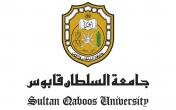Effects of Reclaimed Wastewater Irrigation on Olive (Olea europaea L. cv. ‘Koroneiki’) Trees
Irrigation of olive trees with treated wastewaters in arid and semi-arid regions is becoming a necessary alternative to addressing issues of water shortages. The irrigation requires a careful monitoring of soil and plants for a range of parameters including salts, nutrients, micro-elements, heavy metals, toxic pollutants, and pathogens. A 3-years monitoring of the above parameters in soil and leaves of olive trees in Crete, Greece was conducted using trees that were irrigated with three types of water: secondary treated wastewater (STW), tertiary treated wastewater (TTW), and tap water (TW). Plant growth was similar for all irrigation sources as indicated by measured trunk diameter, plant height, and photosynthetic activity. In addition, no significant differences in mineral leaf content were observed. Accumulation of nutrients (mainly P and K) and salts (Na) in soils 2 years after the application of both types of treated wastewater were observed in comparison to tap water. Magnesium, calcium, and boron concentrations in treated wastewaters were higher than TW. However no effects on soil concentrations were reported. Concentration of polycyclic aromatic hydrocarbons in soil ranged from 349.0gkg−1 to 395.4gkg−1 values not significantly different between the examined water sources. Finally, E. coli mean content in STW was 3580±800MPN 100mL−1; however, the absence of microbial contamination was detected in leaves and
fruits of olive trees. The results of this study suggest that STW and TTW can be applied successfully for the safe irrigation of the olive groves.













































